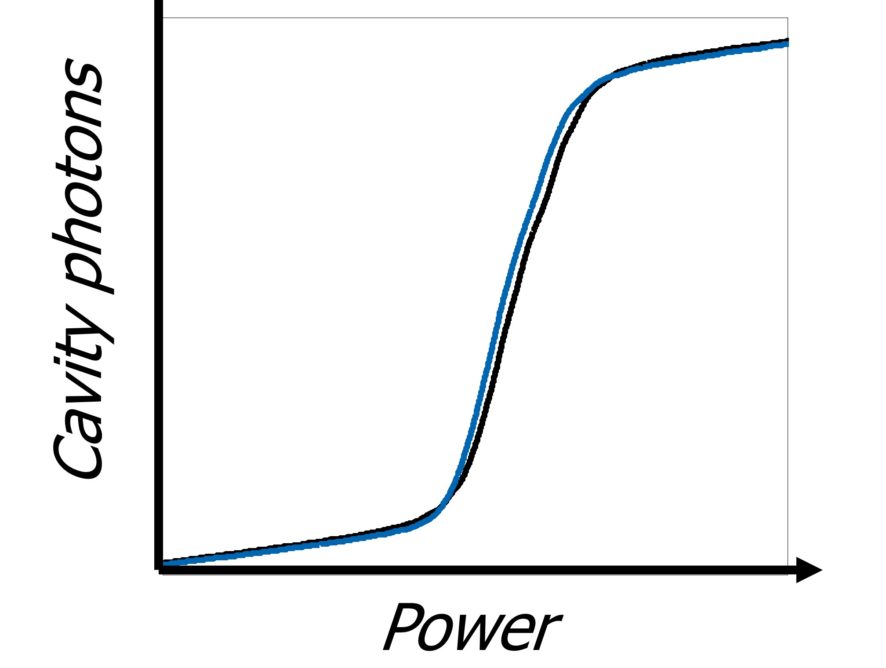For more than 40 years, optical bistability — the existence of two stable states with different photon numbers for one driving condition —has been reported [1]. Remarkably, the quantum theory of a nonlinear resonator always predicts a unique steady-state [2]. This apparent contradiction arises because quantum fluctuations can induce switching between states (leading to a unique steady-state) over astronomical time scales [3]. While fluctuations forbid the static hysteresis associated with bistability, hysteresis emerges dynamically for finite sweep rates of the driving intensity [4].
Recently, we demonstrated the influence of quantum fluctuations on the optical hysteresis of semiconductor microcavities. The hysteresis area decays following a double power-law on a time scale vastly greater than the photon lifetime. Approaching the thermodynamic limit of high photon densities, the double power-law becomes a single power-law. This algebraic behavior characterizes a dissipative phase transition [5]. These results are promising for exploring critical phenomena in photonic lattices. Therein, the interplay of photon hopping and interactions is expected to give rise to a rich phenomenology that we would like to explore.
